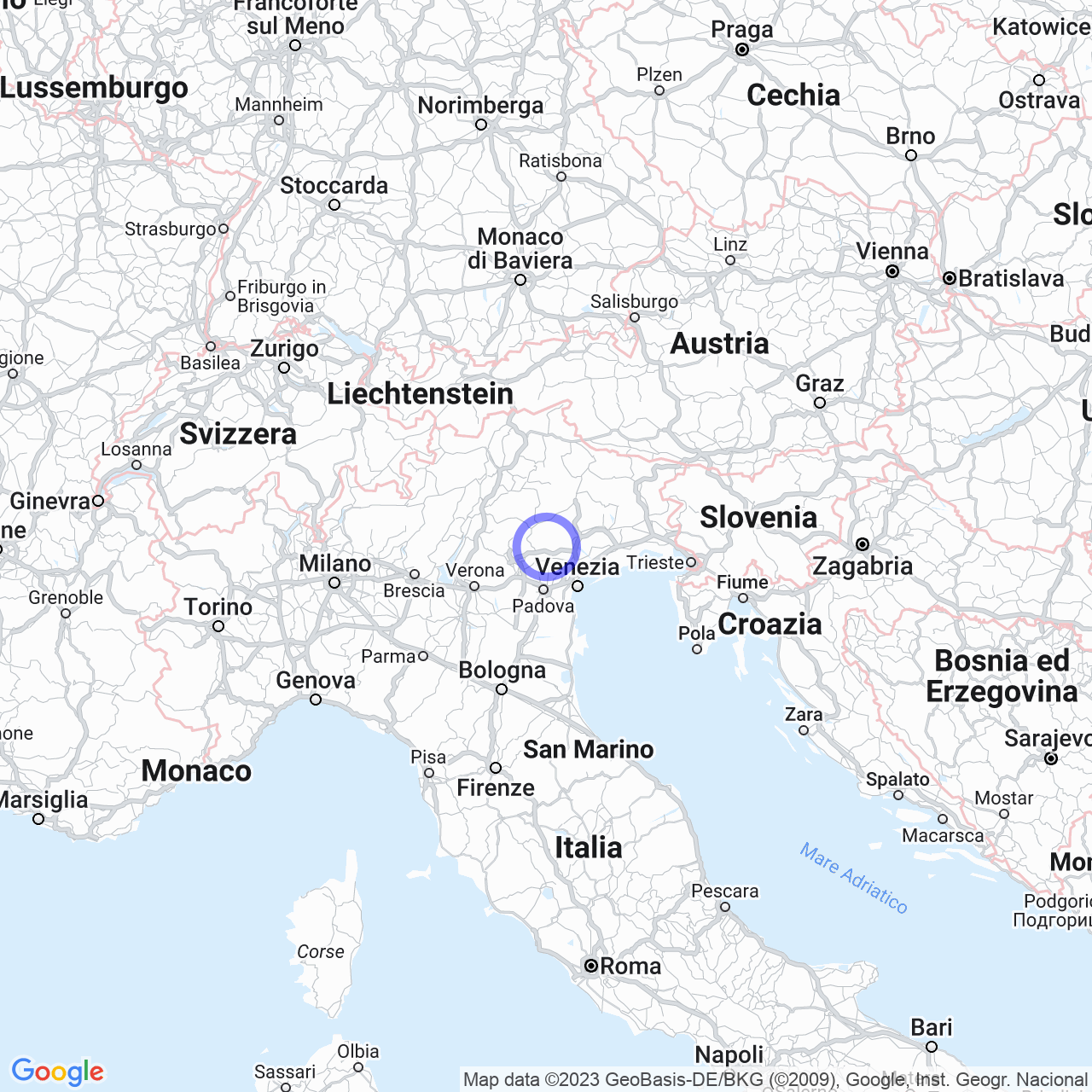Asolo
Welcome to Asolo: the hill town protected since the 13th century
Welcome to Asolo, the Veneto municipality located in the province of Treviso, famous for its history and picturesque landscape. Being part of the "Most Beautiful Villages of Italy" association is not surprising when considering the natural beauty of the city and its cultural heritage.
Physical geography
The municipality of Asolo extends over the transition point between the Veneto-Friulian plain and the overlaid hilly area that anticipates the Belluno pre-Alps. The southern part of the municipality, which includes Villa d'Asolo and Casella, is completely flat while the northern part has modest reliefs, including Poggio San Martino, which culminates at 379 meters in height.
The town of Asolo perches on the hills, overlooking the underlying plain, and the town hall is located at an altitude of 210 meters. Pagnano, in the western area of the municipality, is characterized by less high hills, including the Cogorer hill, which reaches a height of 176 meters. The Musone stream is the only important watercourse in the territory, and is accompanied by some sources, such as the Fornet spring and the Breda fountain.

Name origins
The name Asolo derives from the Latin "Acelum," found in documents from the Roman era. The Proto-Indo-European root "*ak," which means "sharp place," is probably linked to the hilly nature of the territory or to the hill on which the fortress stood.
History
Protohistoric, ancient Venetian and Roman period
Civilization first appeared in the territory of Asolo already in the Middle Paleolithic, but the first stable settlements date back to the Bronze Age. Between the 8th century BC and the 1st century BC, Asolo was an important transit point for transhumance, sheep farming, and wool trade. The settlement in the town center was located where it is currently, while necropolises were located on the southern slopes.
The city then passed under the dominion of Roman civilization, becoming a "municipium" with jurisdiction over the underlying plain up to the via Postumia and from the Brenta to the Piave. Remains of an aqueduct, thermal baths, a forum, and a theater are still visible.
The Middle Ages
In the 13th century, the city of Asolo was protected by a fortress built on the top of the hill. In 1310, the queen of the city, Regina della Scala, married Cangrande della Scala, lord of Verona, and Asolo was thus included in the Scaliger lordship. During this period, art and culture flourished in Asolo, and the city was visited by important artists and writers, including Giotto, Robert Browning, and Eleonora Duse.
Renaissance and modernity
In the 16th century, Asolo passed under the dominion of the Serenissima Republic of Venice, and many buildings were rebuilt or strengthened. Later, the Napoleonic wars severely damaged the city, but were followed by a period of reconstruction.
In the twentieth century, Asolo was an important center for the artistic and cultural community, especially thanks to the presence of Queen Caterina Cornaro, a patroness and passionate about art and culture. In the 1930s, the city also became a destination for famous figures in cinema and entertainment, such as Eleonora Duse, Gino Cervi, Charlie Chaplin, and Roberto Rossellini.
Conclusions
Asolo has gone through many periods of Italian history, and has preserved a large part of its cultural and architectural heritage, witness of its great importance. Visitors to the city can enjoy the beauty of nature, history, and art that Asolo offers, and savor the peaceful and serene life in a welcoming and tranquil city.
